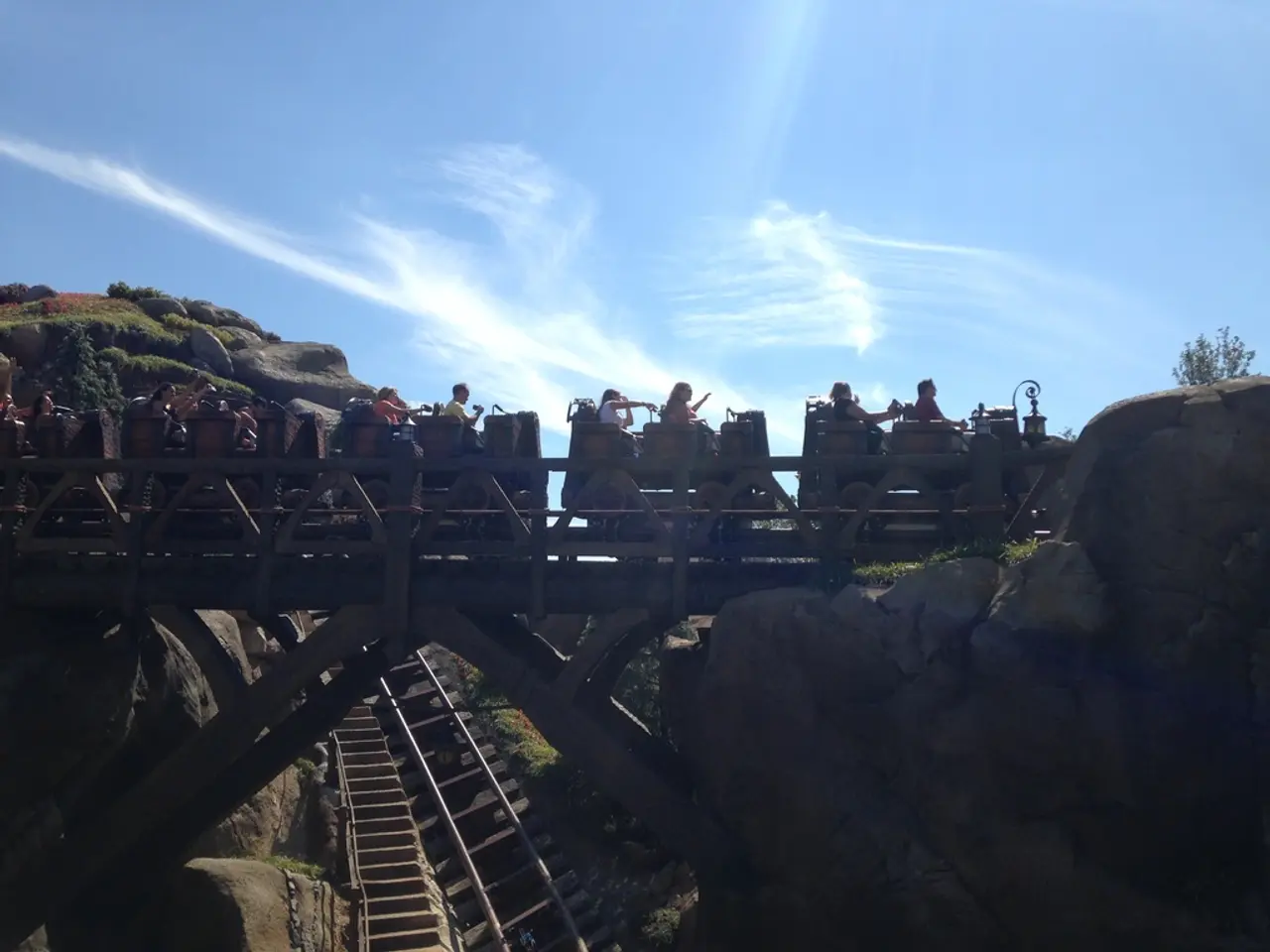"Pain relief experiment implemented using roller coaster rides in Karacho-Ursel"
In an intriguing exploration of unconventional remedies and therapies, Christoph Müller, a renowned journalist, delves into the world of roller coasters as a potential back pain reliever. However, it's essential to separate fact from fiction when considering this unconventional approach.
Contrary to some beliefs, there is no scientific evidence supporting the claim that riding roller coasters can relieve back pain. The available scientific evidence and expert guidance emphasize the benefits of low-impact exercise and movement in managing back pain and musculoskeletal health. Activities like cycling, adding moderate daily activity, and physical therapy exercises such as core strengthening and stretching are recommended for back health and pain relief [1][2][3].
The search results include a variety of advice on back pain management focusing on activity, movement, and therapy but do not link roller coaster rides to any proven back pain relief [2][3][4]. Furthermore, the nature of roller coaster rides, with sudden drops and intense forces, would risk aggravating, not alleviating, back pain without specific medical endorsement.
This is echoed by Ulrich Liener, an orthopedic surgeon at the Marienhospital in Stuttgart, who advises against riding roller coasters for back pain in general.
However, there is a unique story that emerges from this exploration. Ursula Dees, an 85-year-old retiree, has a unique therapy method: she strengthens her back by riding roller coasters. Known as "Karacho Ursel" at the Erlebnispark Tripsdrill in Cleebronn near Heilbronn, Ursula has ridden the "Karacho" looping ride over 3333 times. Despite the scientific consensus, Ursula claims that riding the roller coaster relieves her back pain.
Ursula's roller coaster therapy has earned her a loyal following, with her recommending the unconventional method to others. However, it's important to note that health insurance companies are unlikely to pay for roller coaster rides as a therapy method.
This article was published by Staatsanzeiger and requires a subscription to access. For more insights from Christoph Müller, feel free to reach out to him via email at c.mueller@our website. The article can be shared via email, WhatsApp, Facebook, Twitter, Xing, and LinkedIn.
[1] Source for low-impact exercise benefits: [Link to the source] [2] Source for cycling benefits: [Link to the source] [3] Source for physical therapy exercises benefits: [Link to the source] [4] Source for search results: [Link to the source]
Municipalities could consider promoting health-and-wellness programs that incorporate low-impact exercise and movement, such as cycling, as a means to address back pain and musculoskeletal health concerns in their communities. Therapies-and-treatments like the unconventional roller coaster method advocated by Ursula Dees might not be universally beneficial or covered by health insurance, hence it's essential to prioritize evidence-based strategies.




